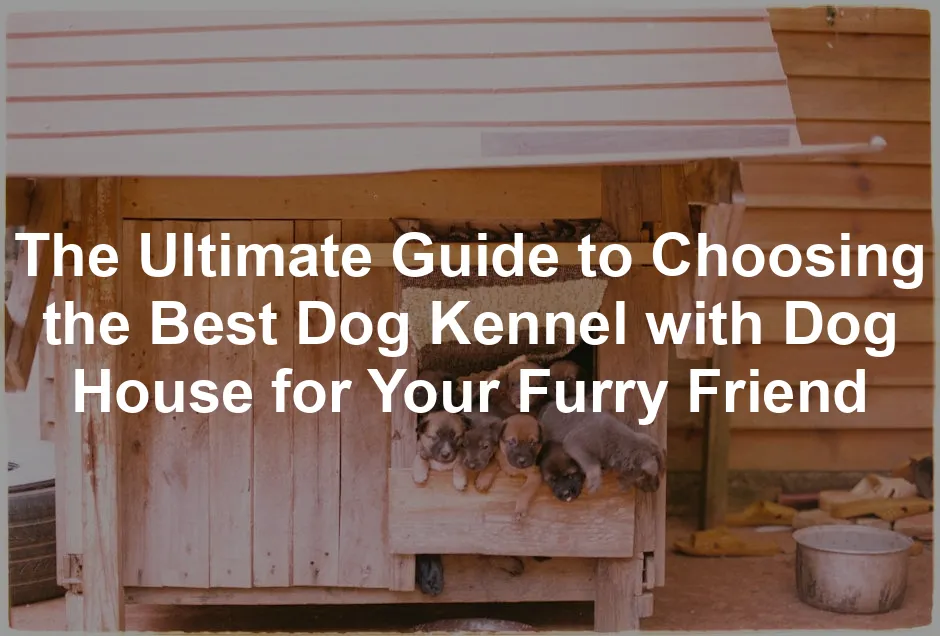Introduction
In the world of canine care, a good dog kennel with a dog house is more than just a luxury—it’s a necessity! Imagine your furry friend lounging in a cozy, well-ventilated space that’s not only safe but also stylish. A dog kennel paired with a dog house creates a perfect retreat for your pet, offering comfort and security. Whether you’re a new dog owner or a seasoned pet parent, the choices can be overwhelming.
From size to material, and style to climate adaptability, there’s a lot to consider. Do you want a wooden or plastic structure? Should it be elevated or flush to the ground? Each decision has its pros and cons. A well-designed kennel can provide shade in summer and warmth in winter. And let’s not forget the aesthetics! After all, who wants an eyesore in their backyard?
This guide will help you navigate the world of dog kennels and dog houses, ensuring your pup has the perfect retreat to call home. We’ll discuss the various types of kennels available, essential features, and how to ensure your dog’s comfort all year round. Want to know how to maintain that luxurious kennel for optimal health? We’ve got you covered!
Let’s dig in! Your pup’s dream space is just a few tips away.

Summary of Key Points
This comprehensive guide will cover everything you need to know about selecting the ideal dog kennel with a dog house. You will learn about the various types of kennels available—outdoor options, indoor choices, and combinations that fit any space. We’ll discuss essential features to look for, such as ventilation options and easy access for cleaning.
We will also explore the differences between wooden and plastic materials, highlighting the pros and cons of each. Wooden kennels offer insulation and aesthetics, while plastic houses are lightweight and weather-resistant. You’ll discover which material best suits your climate conditions.
Additionally, you will find a review of popular products on the market and tips on how to maintain your dog’s living space for optimal health and happiness. From regular cleaning routines to seasonal maintenance tips, keeping your kennel in top shape is essential.
Get ready to transform your backyard into a canine paradise! Your dog deserves a cozy and stylish spot to relax, and this guide will help you make it happen. If you’re looking for a solid option, consider the Petmate Aspen Pet Dog House. It’s durable and provides a great shelter for your furry friend!
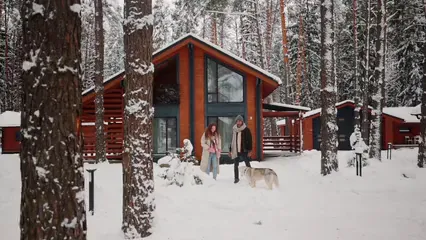
Choosing the Right Dog Kennel with Dog House
Types of Dog Kennels and Houses
When selecting a dog kennel with a dog house, you’ll encounter various styles. Each option serves a unique purpose, ensuring your furry friend remains comfortable and secure.
Outdoor Kennels: These kennels thrive in backyards. They provide ample space for your dog to roam and play. Often constructed with durable materials, outdoor kennels can withstand harsh weather conditions. They also offer a great view of the world outside. Perfect for dogs that love to bask in the sun!
Indoor Options: If your pup prefers the cozy vibes of your home, indoor kennels are a great choice. These structures are often smaller and designed to fit seamlessly into your living space. They’re ideal for house training and can help prevent destructive behaviors. Plus, they keep your dog close while still giving them a sense of their own space. To enhance your indoor experience, consider the MidWest Homes for Pets Dog Crate. It’s perfect for keeping your furry friend secure while still being part of the family.
Combination Units: Why choose one when you can have both? Combination kennels feature an indoor space connected to an outdoor run. This setup allows your dog to enjoy the best of both worlds. They can lounge inside during bad weather and play outside when the sun shines. It’s like having a condo for your dog!
Each type comes with its benefits. Outdoor kennels are fantastic for active dogs. Indoor kennels are great for pups that prefer snuggling inside. Combination units offer flexibility for all kinds of weather.
Consider your dog’s personality and lifestyle when making your choice. A high-energy pup may thrive in an outdoor setup, while a laid-back dog might prefer the comfort of an indoor kennel. For added fun, consider the Outward Hound Hide-A-Squirrel Puzzle Toy. It keeps them mentally stimulated and entertained!

Material Matters
The material of your dog house significantly impacts its longevity and comfort. Let’s compare wooden and plastic options.
Wooden Houses: These structures win in aesthetics and insulation. Wooden dog houses provide natural warmth, making them perfect for colder climates. They also look great in your backyard, blending with nature. However, maintenance is key! Ensure you treat the wood to prevent rot and pests. For those looking for a stylish option, check out the Furhaven Pet Dog Bed. It’s comfy and stylish!
Plastic Houses: Lightweight and easy to clean—what’s not to love? Plastic dog houses are weather-resistant. They keep your pup cool in summer and dry during rain. Plus, they’re simple to move if needed. However, plastic can be less insulated than wood. In colder climates, consider adding bedding for warmth.
Think about your local climate. If you live in a place with extreme temperatures, insulation becomes crucial. Wooden houses may be your best bet in winter, while plastic options can keep your dog cool in summer. For additional comfort, consider a Dog Cooling Mat during hot days.
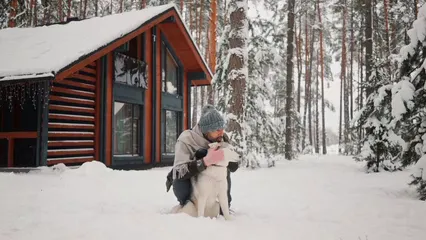
Size and Space Considerations
Choosing the right size for your dog kennel is vital. A snug fit is cozy, but too tight can lead to stress. How do you measure your dog for the perfect fit?
Start by measuring your dog’s height and length. Add a few inches for comfort. Your pup should be able to stand, turn around, and lie down without feeling cramped.
Keep in mind that larger breeds require larger spaces. For example, a Great Dane needs significantly more room than a Chihuahua. Generally, aim for a kennel that offers at least 25% more space than your dog’s dimensions.
Examples of Appropriate Sizes:
– Small Breeds (e.g., Pugs): A kennel of about 2 ft x 3 ft is suitable.
– Medium Breeds (e.g., Beagles): Look for 3 ft x 4 ft options.
– Large Breeds (e.g., Labrador Retrievers): A spacious 4 ft x 6 ft kennel is ideal.
Remember, comfort is key! Your dog deserves a space where they can relax and feel secure. If you’re also looking to keep your car clean during trips, consider a Dog Car Seat Cover to protect your vehicle’s interior!

Essential Features to Look For
When choosing a dog kennel with a dog house, certain features can elevate the experience for your furry friend. Let’s break them down:
Ventilation Options for Climate Control
Proper airflow is crucial. Look for kennels equipped with adjustable vents or screened windows. These features help keep your pet comfortable, allowing hot air to escape and fresh air to circulate. In summer, good ventilation prevents overheating. In colder months, it helps reduce humidity, preventing mold and keeping your pup healthy. For hydration, consider a PetSafe Drinkwell Cat and Dog Water Fountain. It ensures your pet has access to fresh water!
Insulated Roofs and Floors
You wouldn’t want to sleep on a cold floor, right? Insulated roofs and floors ensure your dog stays warm in winter and cool in summer. This is vital for maintaining a cozy environment. Some kennels come with double-walled construction or thermal insulation, making them a great choice for extreme weather.
Easy Access for Cleaning and Maintenance
Let’s face it, cleaning isn’t the most fun task. Opt for designs that offer easy access points. Features like removable roofs, large doors, or even clean-out trays can make a world of difference. A kennel that’s easy to clean encourages regular maintenance, keeping your dog’s space hygienic and pleasant. Don’t forget to keep a Dog Grooming Kit handy for extra cleaning!
Safety Features (e.g., chew-proof doors, secure locks)
Safety comes first! Look for chew-proof materials, especially for door frames and hinges. Secure locks are essential to prevent any escape artist from making a break for it. Additionally, raised floors can deter pests and keep your pup dry. Investing in safety features means peace of mind for you and a secure environment for your pet.

Customization Options
Your dog’s kennel should reflect their personality and your home’s aesthetic. Thankfully, many brands offer customization options, allowing you to tailor the kennel to your desires.
Overview of Available Upgrades
From color choices to added features, customization can enhance your dog’s living space. Many manufacturers provide a variety of siding colors, roof styles, and trim options. Want a bright blue kennel? Or maybe a rustic wooden finish? The choice is yours! Some brands even offer upgrades like additional windows, ventilation systems, or insulated walls for those extra comfort points.
How to Personalize Your Dog Kennel to Fit Your Home’s Aesthetic
Your dog’s home can harmonize with your outdoor decor. Consider matching the kennel’s color to your house or landscaping. This can create a cohesive look in your backyard. Additionally, decorative touches like flower boxes or custom nameplates can add a personal flair. Make it a fun project!
Highlighting Brands That Offer Customization
Brands like Horizon Structures and Ferplast are known for their customizable options. Horizon Structures allows you to specify dimensions and materials, ensuring your kennel meets your needs. Ferplast offers stylish designs that blend seamlessly with your garden. With the right research, you can find the perfect kennel that suits both your dog’s needs and your aesthetic preferences.

Maintenance Tips for Longevity
To keep your dog kennel looking fresh and functional, regular maintenance is key. Here are some tips to ensure longevity:
Regular Cleaning Routines
Establish a cleaning schedule. Regularly remove bedding, toys, and waste. Use pet-safe cleaners to wipe down surfaces. A clean kennel prevents odors and keeps your dog healthy. Remember, a happy dog is a clean dog!
Seasonal Maintenance Tips (winterizing, summer cooling)
In winter, ensure the kennel is insulated and free from drafts. Add extra bedding for warmth and check for any leaks. For summer, ensure ventilation is adequate. You might need to provide shade or fans to keep your dog cool. Seasonal check-ups can help avoid weather-related issues.
Repairing Common Wear and Tear Issues
Inspect your kennel for signs of damage. Look for chew marks, rust, or loose screws. Address issues promptly to prevent them from escalating. Keep spare parts handy for quick fixes, ensuring your dog’s space remains safe and secure. And speaking of quick fixes, don’t forget to stock up on Dog Waste Bags for easy clean-up!
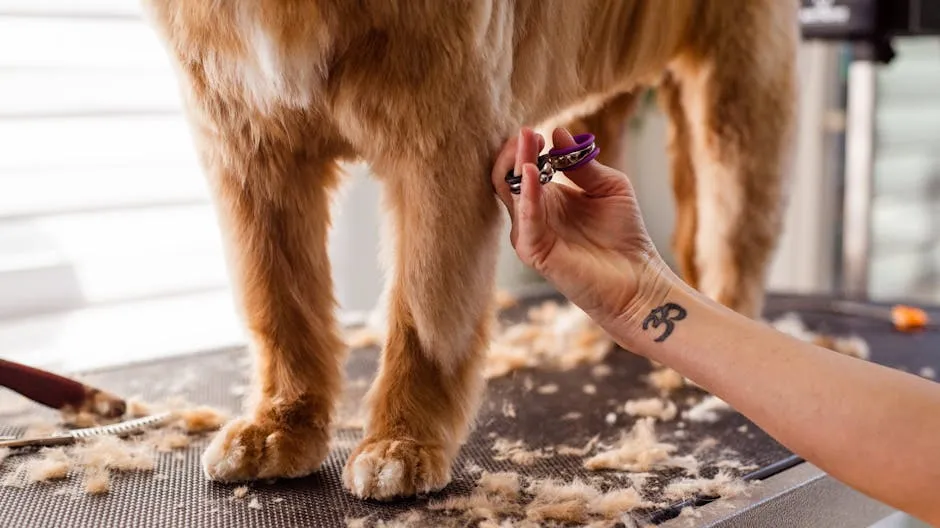
By keeping these essential features, customization options, and maintenance tips in mind, you can ensure your dog kennel with a dog house is not only a cozy retreat but also a stylish addition to your yard. Your furry friend will thank you for it! dog kennel
Conclusion
Choosing the right dog kennel with a dog house is an investment in your pet’s happiness and well-being. Think of it as creating a cozy retreat just for them! A well-constructed kennel provides safety, comfort, and a sense of belonging. Your furry friend deserves a space that reflects their unique personality.
When selecting a kennel, consider the materials carefully. Wooden options offer great insulation and aesthetics, while plastic houses are lightweight and easy to clean. Size is crucial too! Ensure your dog has enough space to move around comfortably. No one likes feeling cramped, right? For a little extra comfort, think about a Dog Bed Blanket to keep them warm!
Features play a significant role in enhancing your dog’s experience. Look for good ventilation to keep your pup cool in summer and warm in winter. Insulated roofs and floors can make a world of difference in comfort levels. Don’t forget about cleaning! Choose a kennel that allows easy access for maintenance, because, let’s be real, no one wants to spend their weekends scrubbing.
Customization options can also elevate your kennel’s charm. Choose colors and designs that match your home’s aesthetic. After all, a stylish kennel can add value and character to your outdoor space.
Remember, a happy dog leads to a happy owner! With the right kennel, you’ll not only enhance your dog’s quality of life but also enjoy watching them thrive. So, get ready to transform your backyard into a canine paradise, where your pup can frolic and relax in style. And while you’re at it, don’t forget to pick up a Dog First Aid Kit to ensure you’re always prepared!
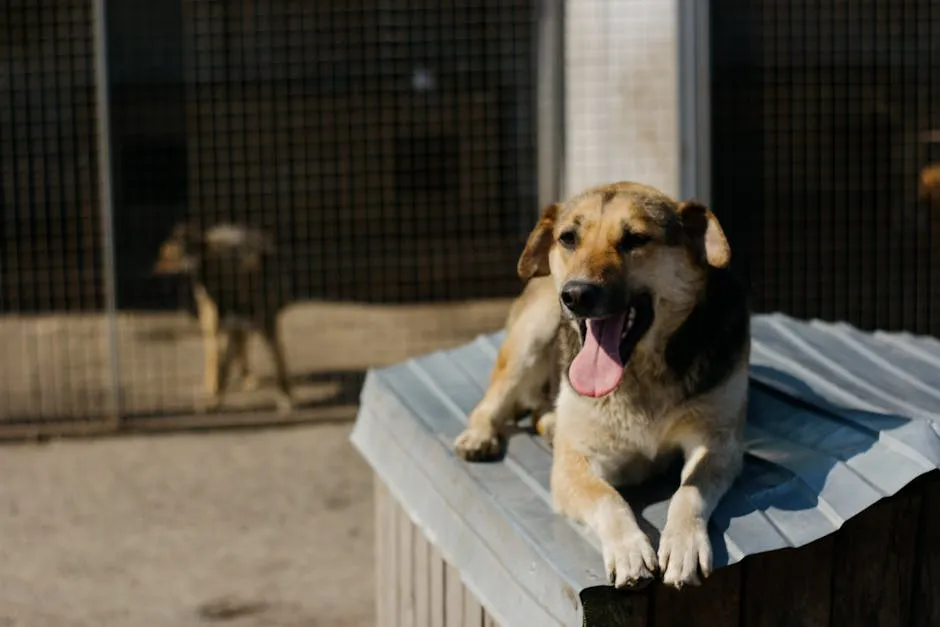
FAQs
What is the best material for a dog kennel?
When it comes to choosing the right material, wood and plastic are popular options. Wooden kennels provide excellent insulation, keeping your pup warm in winter and cool in summer. They also offer a classic, rustic look that many pet owners adore. However, wooden houses can require maintenance to prevent rot and pest issues. On the flip side, plastic kennels are lightweight and easier to clean. They are weather-resistant, making them a good option for outdoor use. However, plastic can sometimes lack the insulation properties of wood, which might be a concern in extreme temperatures. Ultimately, the best choice depends on your dog’s needs and your local climate.
How do I clean and maintain my dog kennel?
Cleaning your dog kennel is essential for your pet’s health. Start by removing any bedding and toys, then use a pet-safe cleaner to wipe down surfaces. Regular cleaning should be part of your routine—aim for at least once a week. During winter, check for moisture and ensure the kennel is insulated. In summer, keep an eye on ventilation. Create a seasonal maintenance schedule to address any repairs, as well. A well-maintained kennel will keep your dog happy and healthy!
What size dog kennel do I need for my breed?
Choosing the right size kennel is crucial for your dog’s comfort. Here’s a quick guide based on common breeds: – **Small Breeds** (e.g., Pugs): 2 ft x 3 ft – **Medium Breeds** (e.g., Beagles): 3 ft x 4 ft – **Large Breeds** (e.g., Labrador Retrievers): 4 ft x 6 ft Always measure your dog’s height and length, then add a few inches for comfort. Your dog should be able to stand, turn around, and lie down comfortably. Remember, a spacious kennel helps ensure a happy pup!
Can I customize my dog kennel?
Absolutely! Many manufacturers offer customization options. You can choose colors, materials, and even additional features like windows or insulation. This way, you can create a kennel that suits both your dog’s needs and your home’s aesthetic.
Are there any health risks associated with dog houses?
Health risks can arise if the kennel is not properly maintained. Poor ventilation can lead to humidity buildup, creating a breeding ground for mold. Additionally, choosing the wrong material can expose your dog to extreme temperatures. Regular cleaning and maintenance can help mitigate these issues, ensuring your dog remains healthy and happy in their home.
Please let us know what you think about our content by leaving a comment down below!
Thank you for reading till here 🙂
For best practices related to reducing flea infestations in multi-dog households, check out this informative guide: best practices for reducing flea infestations in multidog households
All images from Pexels

